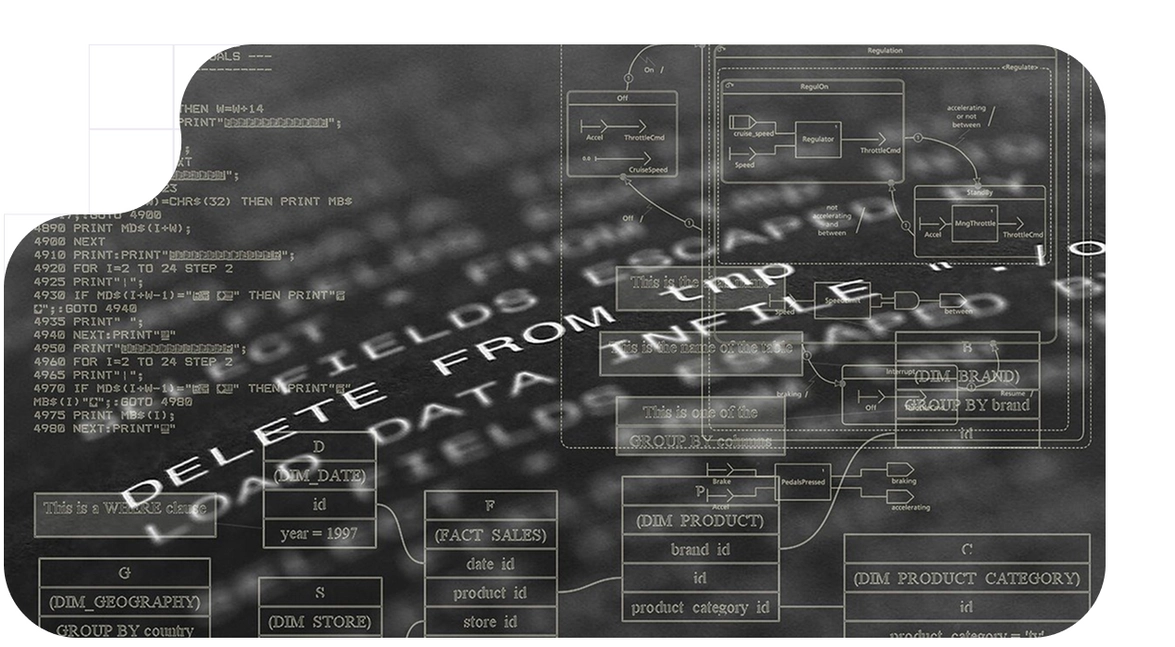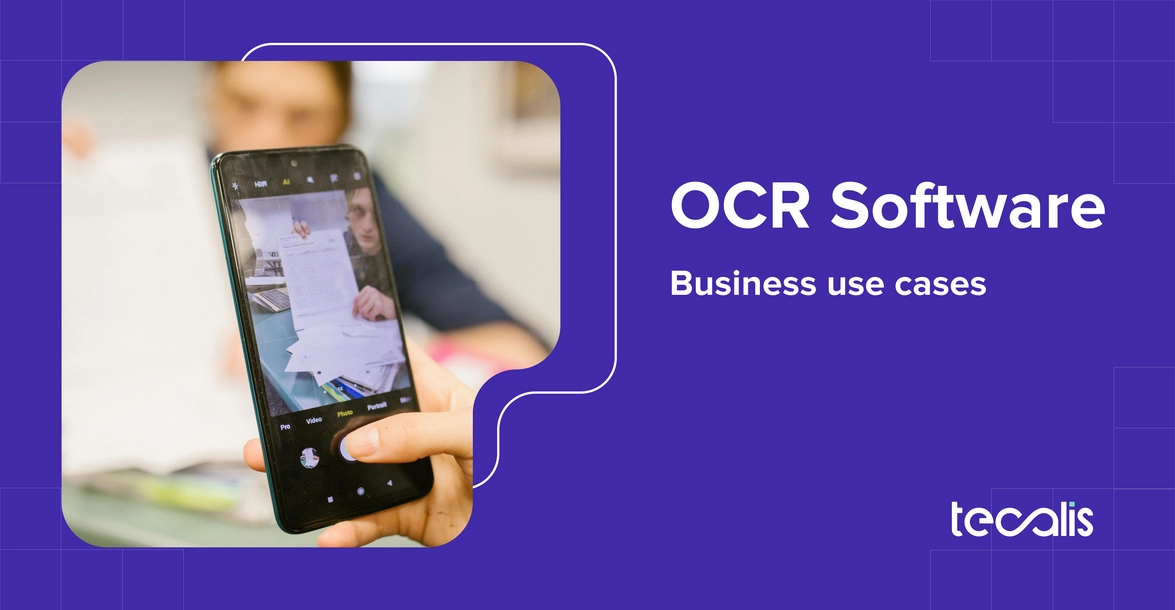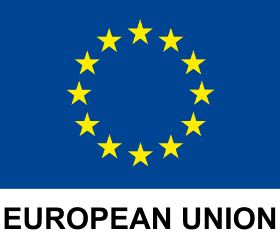Index
Get the latest news right in your inbox
Optical Character Recognition (OCR) has established itself as a fundamental tool in the digital transformation of companies in various sectors. Although commonly associated with the simple digitization of identity documents, the potential of OCR software extends far beyond this, revolutionizing the way companies manage information and automate their workflows.
In this article, we explore how enterprise OCR software goes beyond simple digitization to become a strategic tool for optimizing processes, reducing costs and improving decision making. We will delve into the technical operation of OCR software, its various applications in the business environment and how the integration of technologies such as artificial intelligence (AI) and computer vision is transforming the industry. In addition, we will discuss the different types of OCR software available, from online OCR solutions to enterprise-specific tools.
What is OCR or Optical Character Recognition software?
OCR software is a tool that transforms images of printed or handwritten text into editable digital data. Thanks to this software, physical documents, photographs and scanned files can be converted into information that can be manipulated by computer systems, eliminating the need to manually transcribe each piece of data. This digitization capability is essential for process automation and document management in companies of any sector.
OCR (Optical Character Recognition) is, in essence, a technique that combines image processing and machine learning algorithms to identify and extract characters from a visual medium. This system has become indispensable in the digital era, allowing companies to optimize processes, improve efficiency in information management and, in many cases, significantly reduce operating costs.
How OCR software works
The operation of an OCR software involves several technical steps that together enable the accurate conversion of images into digital text. The following is a step-by-step process:
- Image Capture and Preprocessing
The first step is to obtain an image of the document or text to be digitized. This image can come from a scanner, digital camera or even a screen capture. Once obtained, preprocessing techniques such as skew correction, contrast enhancement and denoising are applied to facilitate character identification. These techniques ensure that the system works with the best possible image quality. - Document Segmentation
At this stage, the software divides the image into smaller areas, identifying areas of text, images and other elements. Segmentation is crucial to isolate each block of information, allowing OCR to focus only on the textual content. This involves identifying lines, words and, subsequently, individual characters. - Pattern and Character Recognition
Using pattern recognition algorithms, the system compares segmented characters with an internal database of predefined shapes and patterns. The algorithms may include traditional template correlation methods or, in more advanced versions, deep learning techniques that have been trained on large volumes of data. This phase is critical for converting visual patterns into digital characters. - Post-processing and Error Correction
Once the characters have been recognized, a review of the text obtained is carried out to correct possible errors. This phase may include the application of dictionaries, contextual analysis and grammatical rules to help improve the accuracy of the final result. The combination of these methods significantly reduces the error rate and ensures that the digitized information is as accurate as possible. - Data Integration and Export
Finally, the digitized text is integrated into the desired system. This may involve exporting it to editable formats (such as DOC, PDF or databases), integrating it into document management systems or even into data analysis and business intelligence applications.
This process, although it may seem simple in its description, involves state-of-the-art technologies and a high degree of technical sophistication, which explains why OCR Software has become an indispensable tool for the automation and digitization of processes.

Use cases of OCR software in companies
The application of OCR systems and software in the business environment is vast and relevant across multiple industries. Its main benefit lies in the transformation of manual, paper-intensive or static image-based processes into automated and efficient digital workflows. This translates directly into a significant reduction in processing time, which in turn generates considerable operational cost savings, minimizes human error and frees staff for more value-added tasks.
Let's look at some specific examples by industry where enterprise OCR makes a tangible difference:
Banking and Financial Services
In the Banking and Financial Services industry, OCR software is essential to optimize critical operations. It significantly speeds up customer onboarding (KYC) by automatically extracting data from identity documents, vouchers and payroll, reducing processes from days to minutes and ensuring regulatory compliance. It also accelerates loan processing by digitizing and extracting key information from applications and financial documentation, facilitating faster credit evaluation.
OCR also streamlines the processing of checks for electronic clearing, eliminating the need for their physical transfer, and automates accounting and reconciliation by capturing data from vendor invoices and bank statements for faster and more accurate management. Finally, this technology enhances AML compliance and fraud detection by enabling efficient analysis of large volumes of documents for suspicious patterns.
Telecommunications Sector
The telecommunications industry has benefited from OCR software as it speeds up the closing and management of contracts by digitizing them and extracting key data such as clauses, expiration dates and customer details, allowing direct linkage to the company OSS/BSS.
In addition, it automates invoice processing by reading and validating documents from both customers and suppliers. This technology also significantly improves customer service by providing agents with immediate access to relevant information contained in customer-related documents, such as application forms or claims, directly during support interactions.
Utilities Sector (Energy, Water, Gas)
In the utilities sector, OCR software has proven to be a valuable tool for modernizing different operational areas. Its application for reading analog meters, processing photographs to obtain remote readings, represents an important step in the digitization of this process.
Currently, it is fundamental to optimize invoice and payment processing, as it allows large-scale digitalization and a much more efficient and faster management of invoices (issued to users and received from suppliers) reducing the administrative burden and possible errors. In addition, this technology contributes significantly to better management of supply contracts, automatically extracting key data such as effective dates, specific conditions or rates, which greatly simplifies their monitoring, consultation and overall administration.
Insurance Sector
In this sector, the software has significantly streamlined claims processing, including handling discharges and similar tasks, by automatically extracting information from forms, medical reports, repair invoices and other supporting documents; this drastically reduces handling times and improves customer satisfaction.
It also streamlines the underwriting process by enabling rapid analysis of policy applications and supporting documentation, facilitating risk assessment and premium setting. It also simplifies the management of existing policies by digitizing and extracting relevant data, facilitating subsequent queries and modifications.
Logistics and Transportation
A key application is the automatic extraction of Bill of Lading (BoL) data, which is essential for companies in the industry to quickly capture information (such as shippers, consignees, cargo details and sea or land routes), thereby streamlining data entry into tracking systems (TMS), cargo verification and the digitization and automated management of delivery notes and packing slips.
Another widespread application is the automated processing of Customs Documents, an indispensable enhancement for freight forwarders, customs brokers and import/export companies, allowing them to extract data from declarations and commercial invoices to speed up the preparation of customs clearances, reducing the risk of error and ensuring regulatory compliance.
Legal
OCR software is gradually being implemented in the legal sector, its applications include eDiscovery, which is the process of digitizing the large volume of documentation used in litigation, and the review of contracts to extract key data.
Once the documents have been analyzed or drafted, their formalization is facilitated by electronic signature solutions. Platforms such as Tecalis Sign allow parties to sign contracts and agreements digitally, with full legal validity in accordance with the eIDAS regulations in force in the European Union.
In all these cases, the use of OCR software not only speeds up processes, but also improves accuracy by reducing manual data entry errors, ensures consistency, facilitates regulatory compliance by creating digital audit trails, and improves accessibility to decision-critical information.
Types of OCR software available on the market
Today's market offers a wide variety of OCR software, each designed to meet specific needs. These can be categorized according to their purpose and type of use:
- OCR for onboarding and identity validation processes
Solutions designed to capture and verify customer identity, enabling fast and secure onboarding processes in sectors such as banking, insurance and telecommunications. These tools usually integrate facial recognition and document verification algorithms, facilitating regulatory compliance and fraud prevention. - OCR for document processing
Oriented to digitizing documents/invoices en masse, these systems are used in administration, accounting and human resources offices. They allow the automation of data entry, document classification and integration into document management systems. - OCR for invoice and voucher validation
In environments where invoice processing is essential, these solutions enable the extraction of relevant data from business documents, automating accounting and expense control. This category is especially useful for companies that handle large volumes of invoices, reducing errors and speeding up accounting processes. - OCR for human resources and personnel management
These tools facilitate the digitization of resumes, application forms and other documents related to recruitment. They enable faster management of candidate information and optimize selection processes, speeding up the integration of new employees. Each of these categories is designed to address specific challenges within a company's document workflow, contributing to operational efficiency and digital transformation.
- OCR for KYB processes, scraping and screening with computer vision
The integration of OCR with Computer Vision technologies takes the verification, scraping and screening processes to a higher level, especially in tasks such as KYB (Know Your Business). While OCR extracts textual information from documents and images, Computer Vision adds visual analysis capabilities, allowing not only to read the data, but also to understand the context, verify the authenticity of the document (detecting possible manipulations) and analyze graphical elements. This synergy is crucial to perform more robust screening processes and scraping tasks that require interpreting information beyond plain text, thus obtaining much more complete and reliable business validations and data analysis.
Optimization of document management through OCR software
Document management is one of the most critical aspects in today's business environment. With the rise of digitalization and the need to adapt to remote and collaborative work environments, having a system that automates document management is essential. OCR Software integrates with various platforms and document management systems, allowing:
- Real-time document scanning
Physical documents, such as contracts, forms and correspondence, can be scanned and processed immediately. This speeds up decision making and facilitates access to information at any time. - Workflow integration
The data extracted by OCR can be integrated into ERP (Enterprise Resource Planning) and CRM (Customer Relationship Management) systems, allowing centralized and real-time management. For example, in recruitment processes, the digitization of forms and documents allows candidate information to be automatically sent to human resources systems for evaluation. - Improved identity verification and electronic signature
In regulated industries, identity verification is a critical process. OCR systems are used to scan identity documents and certificates, integrating with electronic signature solutions to ensure secure and compliant processes. This is essential for opening bank accounts, insurance and other financial services. - New customer onboarding processes
In industries such as banking and telecommunications, new customer onboarding requires the verification of multiple documents. OCR facilitates the capture and validation of this information, reducing waiting time and improving the user experience. In addition, integration with artificial intelligence systems allows the detection of possible fraud and errors in KYB/KYC/AML processes. - Archive automation and document search
Once digitized, documents can be archived intelligently. OCR systems allow each document to be indexed with keywords, facilitating quick search and retrieval of information, which is especially useful in audits and legal processes.
Optimizing document management through OCR software not only improves operational efficiency, but also contributes to sustainability by reducing dependence on paper, aligning with ecological and corporate social responsibility strategies.

AI, KYB and OCR: How computer vision works for screening, scraping and similar processes
The rise of artificial intelligence (AI) has significantly boosted the evolution of OCR software. The integration of machine learning and deep learning algorithms has enabled optical character recognition systems not only to recognize characters more accurately, but also to interpret and analyze complex contexts. In this sense, the combination of OCR with computer vision technologies is transforming screening, scraping and verification processes in various business areas.
Screening and scraping processes with advanced technologies
Screening refers to the ability to analyze large volumes of visual data to extract relevant information. In combination with OCR, solutions can be developed that automate the extraction of data from diverse sources, such as websites, image databases and social networks. This is especially useful in KYB (Know Your Business) processes, where verification and validation of company information is automated, ensuring regulatory compliance and facilitating fraud detection.
Data scraping, on the other hand, consists of extracting information from various online sources on a massive scale. By integrating OCR into these applications, data can be captured from images, screenshots and graphic documents, enriching the information obtained and offering a more complete view for market analysis, trend research and competitive studies.
ICR: the evolution of second-generation OCR for business processes and more
Intelligent Character Recognition (ICR) represents the natural evolution of OCR. While traditional OCR is focused on reading printed or typed text, ICR is focused on recognizing handwriting and difficult-to-interpret characters. Thanks to advanced algorithms and neural networks, ICR is able to learn and adapt to different handwriting styles, making it a valuable tool for business processes that require the digitization of handwritten forms, surveys and notes.
Among the advantages offered by the ICR are the following:
- Increased accuracy in handwritten data recognition
The ability to interpret variations in handwriting allows even cursive or poor quality handwritten documents to be accurately digitized. - Adaptability to different languages and formats
ICR systems can be trained to recognize multiple languages and styles, extending their applicability in international contexts and in companies with global operations. - Integration with data analysis systems
By digitizing information that was previously inaccessible or difficult to handle, ICR allows data to be integrated into business intelligence systems, facilitating decision making based on real and updated information. - Sector-specific applications
In areas such as legal, education and healthcare, where handwritten documents are still common, ICR opens the door to automation and digitization that improves efficiency and reduces the possibility of human error.
The evolution of ICR demonstrates how the combination of OCR, AI and computer vision is radically transforming enterprise information processing, enabling more agile and secure handling of large volumes of data.
























